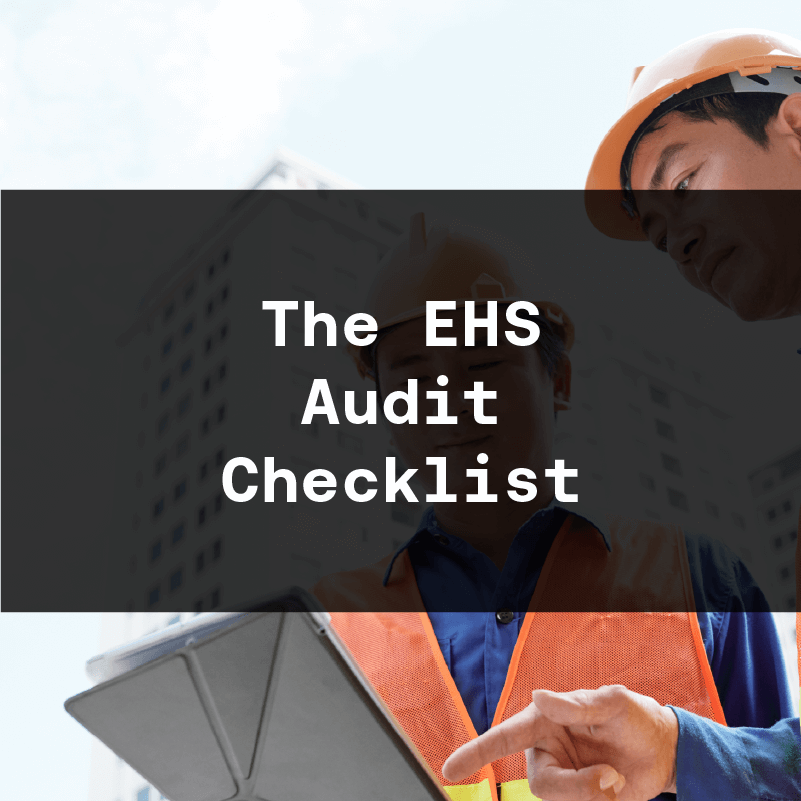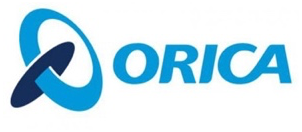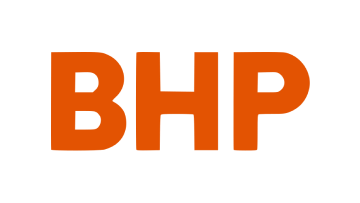EHS Audit Checklist
The Ultimate Template for Internal EHS Audits
- Discover safety gaps
- Ensure you are compliant
- Build trust in shareholders

What is an EHS Audit Checklist?
An EHS (Environmental, Health and Safety) Audit Checklist is a comprehensive tool designed to assess and evaluate compliance with environmental, health, and safety regulations and best practices within an organisation. It consists of a structured list of questions, requirements and guidelines that cover various aspects of EHS management, including workplace safety, environmental impact, and employee health and well-being. The checklist serves as a reference and framework for conducting internal audits, allowing businesses to identify potential risks, gaps in compliance, and opportunities for improvement.
When to use the EHS Audit Checklist
The EHS Audit Checklist is best utilised when organisations want to proactively ensure compliance with EHS regulations and maintain a safe and healthy work environment. It can be employed at regular intervals, such as annually or quarterly, to assess the effectiveness of existing EHS programs, identify areas of improvement, and address any non-compliance issues promptly. Moreover, the checklist is valuable during new facility setups, expansions, or major process changes, as it helps organisations ensure that EHS considerations are properly integrated into these activities from the outset.
How to Use the EHS Audit Checklist
- Download the Checklist: Access the EHS Audit Checklist from our website and save it to your computer or print a hard copy for manual completion.
- Familiarize Yourself: Review the checklist to understand the questions and requirements it contains. Take note of any specific regulations or internal policies that apply to your organization.
- Conduct the Audit: Begin the audit process by systematically working through each item on the checklist. Assess the current state of compliance and document any observations or findings. Attach supporting evidence, such as photographs or documents, as needed.
- Analyze and Report: After completing the audit, evaluate the collected data and identify areas where improvements are necessary. Generate a comprehensive report summarizing the findings, including any non-compliance issues, recommended corrective actions, and responsible individuals or departments.
- Implement Corrective Actions: Based on the audit findings, develop an action plan to address identified gaps or non-compliance. Assign responsibilities and timelines for implementing the necessary corrective actions.
- Monitor and Follow-Up: Regularly monitor the progress of corrective actions and ensure they are effectively implemented. Conduct subsequent audits at appropriate intervals to track improvements and ensure ongoing compliance.
FAQs
The legal obligations for conducting EHS audits vary depending on the jurisdiction and industry. It's essential to research and understand the specific regulations that apply to your organisation. Conducting regular EHS audits is often considered a best practice, even if not mandated by law, as it helps proactively manage risks and ensure compliance.
While the EHS Audit Checklist primarily serves as an internal assessment tool, it can also be valuable for external audits or certifications. However, it's important to note that some certifications or regulatory bodies may have specific requirements or additional criteria beyond what is covered in our checklist. It's recommended to review their guidelines and ensure compliance accordingly.
Streamline your internal audits and inspections and transform captured data into actionable insights.
Why use SafetyIQ?
SafetyIQ’s Audits and Inspections Module transforms traditional solutions into a streamlined, standardized approach. We also take this proactive approach to the next level - predictability, by using the captured data to create configurable dashboards and actionable insights. Find out more.
How do we do this?
Audits and inspections are assigned to team members with context notes, dates, and reminders to make sure nothing gets missed. The audit or inspection can be taken from any device (e.g. mobile phone, tablet) and once completed, you can assign corrective actions where necessary.
Remediation orders are assigned, given a due date, and forwarded to the right person. The progress can be tracked and the completion can be confirmed. Any action not performed in time will automatically generate an alert for follow-up.
Captured data feeds directly into reporting dashboards, allowing you to understand trends and problem hotspots. With this visualised data, users can know where to focus their efforts to make continuous safety improvements.
Benefits of digital solutions:
- Efficiency and Time Savings: Digital solutions streamline the audit process by eliminating the need for manual paperwork, data entry, and storage. With a digital platform, auditors can quickly and easily capture and record audit data, generate reports, and share information across teams. This saves time, reduces administrative burdens, and allows more efficient auditing processes.
- Accuracy and Data Integrity: Paper-based audits are susceptible to errors, such as illegible handwriting or misplaced documents. Digital solutions provide standardized forms and automated data entry, minimizing the risk of human errors.
- Centralised Data Storage and Accessibility: Storing audit data digitally eliminates the need for physical storage space and the risk of document loss or damage. Digital platforms provide centralised storage, making it easy to access and retrieve audit records whenever needed. This accessibility enables historical trend analysis, benchmarking, and the ability to track and monitor corrective actions over time.
- Advanced Reporting and Analytics: Digital audit solutions offer powerful reporting and analytics capabilities. Data can be analyzed to identify trends, patterns, and areas of non-compliance more effectively. customisable dashboards and visualisations provide a comprehensive overview of audit findings, allowing for data-driven insights and strategic decision-making.
- Integration with Other Systems: Digital audit solutions can be integrated with other business systems, such as compliance management software, document management systems, or incident reporting tools. This integration streamlines data exchange and enhances the overall HSE management process, promoting a holistic approach to risk mitigation and compliance.
- Sustainability and Environmental Benefits: Shifting to digital audits reduces paper consumption, printing, and transportation associated with traditional audits. This contributes to environmental sustainability efforts, reducing the organisation's carbon footprint and promoting a greener approach to HSE management.
Real Results Experienced by Our Customers:
Along with productivity improvements, companies have seen insurance premiums and workers' compensation costs reduced.
Palfinger saw their Workers Comp direct cost alone reduced by almost one million dollars over 2 years due to their robust safety management system.













